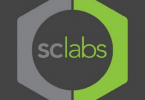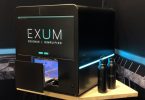Cannabidiol (CBD) products abound in every direction. Beer stores, cigarette outlets, Whole Foods, Amazon, convenience stores, now Dollar General. Farmers’ markets have them, chiropractors’ offices have them, even a Western Pennsylvania gun store was rumored to advertise CBD, so the real question is who isn’t selling it these days?
Despite being a federally legal industry, the feds haven’t yet concerned themselves with generating analytical testing regulations (outside of delta-9-tetrahydrocannabinol, THC). Therefore, forward-thinking companies seeking certificates of analysis on their products must turn to the federally illegal cannabis industry for guidance on things like contaminant testing.
Any mushrooming industry speeding down the highway at CBD’s breakneck pace that’s also devoid of analytical oversight is cruising towards a disaster. This can be illustrated via all the products being tested that don’t match their advertisement or label. CBD products are expensive enough without the added insult of manufacturers not ensuring their claims are defendable with data. When a product label means nothing, what’s a consumer to do, especially when they’re using said product for therapeutic purposes?
I spoke with Dave Marelius, Ph.D., the Chief Scientific Officer of Infinite Chemical Analysis Labs (InfiniteCAL), who recently evaluated twelve commercial CBD products against their label claims. “The most alarming issue facing consumers of hemp products is the lack of federal regulations regarding quality assurance and safety testing for CBD products,” Dave began. “Many consumers are using hemp products to treat medical conditions, but unless a product has been tested by a third-party laboratory, there’s no way of telling if that product is truly safe for consumption. It may be doing more harm than good.”
InfiniteCAL’s research involved testing CBD products purchased from online vendors, strip malls, farmer’s markets and grocery stores to determine if label claims were accurate and if they’d pass the same testing regulations for pesticides and heavy metals set for California cannabis. Out of the 12 samples, 67% (n=8) of samples did not meet label claims for CBD content, based off the 10% discrepancy legally allowed for cannabis products. A 50 mg CBD sample, under those guidelines, would have to conform to between 45 to 55 mg CBD. Five samples had THC levels exceeding the federal limit of 0.3%. Three samples failed for pesticides despite claims that they were “chemical-free” and “well-tested”. And while none of the products failed heavy metal analysis, three of the CBD products contained no CBD.
This must stop as consumers are being duped and monetarily gauged with modern-day snake oil in an era when the availability of information is at an unparalleled and perpetual ascension. Tossing some hemp seed oil into a capsule or tincture bottle is fraudulent if claims of CBD are invoked.
Although InfiniteCAL’s study evaluated 12 samples, similar studies are being done by other companies. For example, Thar Process purchased 22 products online, and found that 11 didn’t conform to their labels as shown during a poster session at the 2019 Green Chemistry workshop in Philadelphia. A 2017 study in the Journal of the American Medical Association showed that 22 of 84 products were over-labeled regarding CBD potency, and the levels of delta-9-tetrahydrocannabinol (THC) were, on average, at an illegal level (0.45%) from a hemp-cultivar perspective. [1] I asked Dave what three main pieces of advice he offers to unsuspecting, trusting consumers.
“The most important issue when it comes to consumers purchasing CBD products is their safety and assurance that there are no harmful components knowingly or unknowingly used in the manufacturing process,” Dave answered. “We have recently seen an example where a manufacturer had added flavoring to their product. Unbeknownst to them, the flavoring contained detectable amounts of dichloromethane solvent, a neurotoxin and probable human carcinogen.”
Dave also said that consumers should consider what quality and safety tests the finished product has undergone, and, depending on the product type, how it was manufactured. “Rigorous analysis of a product will explore pesticides, microbials, mycotoxins, metals, and residual solvents to give a full profile of potentially harmful components, and analysts will provide a certificate of analysis (CoA) that summarizes these results.”
Despite the efforts of some manufacturers to go the extra mile to ensure product safety, InfiniteCAL’s study shows that others are not. Dave suggests that consumers evaluate CoAs before purchasing CBD products and double-check that the batch number listed on the certificate matches the batch number on product packaging. Dave also advises consumers to evaluate ancillary ingredients, especially in inhalable products considering the recent problems associated with cutting agents/diluents added into vape oils.
In 2019, we heard a lot regarding the “dangers” of vaping. While some of the details still seem rather murky, the cannabis industry learned of yet another analyte that could and should be tested – vitamin E acetate. Answering the siren call of 2019 in the cannabis industry to identify this hazardous excipient, InfiniteCAL offers testing on vaping hardware as well as for vitamin E acetate. “We haven’t seen too many companies opting to do a shelf-life analysis on their vaping hardware to check for heavy metal leaching,” Dave reported. “After heavy metal analyses became required for cannabis products in early 2019, manufacturers realized they weren’t going to be able to use cheap hardware from overseas anymore without failing compliance testing. Many manufacturers likely still aren’t aware of the possibility of metals leaching into their oil after weeks of sitting in the hardware. Recently, we’ve been doing shelf-life analysis for companies claiming their cartridges are completely metal-free.”
Many products are also increasingly being touted as THC-free, a concept that is likely more marketing than reality. Any analytical lab has a detection limit that defines how low of a concentration their method can measure. So, if they don’t detect THC, that doesn’t mean that low levels aren’t present; rather, they weren’t detected. I’ve heard some people discuss knowing others who failed drug tests from taking CBD products, and calling any product THC-free seems fraught with potential legal challenges.
“Cannabis and hemp plants are the same,” Dave said. “One just produces far less THC and THCA. These cannabinoids are still present in industrial hemp plants. Even if a CBD isolate shows “non-detect” for THCA or THC on our chromatography instrumentation, with our lowest limit of detection at 1.9 ppm, there could still be THC present below our detection limit. There’s no analytical method that can ensure anything is “100% free”, cannabis or otherwise.”
Dave highlighted the example of “gluten-free” products. The US Food and Drug Administration (FDA) allows products that contain up to 20 ppm of gluten to be classified as “gluten-free”, even though gluten can pose a significant health risk to those that are gluten-intolerant. The FDA also allows products that contain less than 0.5 g of sugar per serving to be called “sugar-free”, which can be problematic for diabetics.
“Although we understand the negative impact that drug tests can have on potential consumers,” Dave continued, “the exposure to minute amounts of THC below detection limits should not lead to a positive drug test unless consumed in vast quantities since the body provides a natural dilution factor. If an 80-kg person consumed 1 kg (about 2.2 pounds) of a sample that contains 1.8 ppm (µg/g) of THC (the maximum amount that a product can have that is below our detection limit), the effective concentration of THC in their body should be 22.5 ppb, which is just above the more stringent 20 ppb screening cutoff used by employers and law enforcement agencies.”
The only analytical testing regulation to come from the FDA requires hemp cultivators to test plants for potency prior to harvest to ensure they don’t exceed 0.3% total THC, an increasing problem given that cultivators aren’t really growing traditional industrial hemp anymore. Product manufacturers are currently not required to conduct safety testing, although progressive companies will clearly see value in the analytics. California hasn’t drafted regulations for identifying whether hemp or CBD products are safe. InfiniteCAL tests CBD products using the same limits set by the Bureau of Cannabis Control for cannabis sold in California, but there is technically no “pass” or “fail”.
“Regulations will take time,” Dave added, “and it would be surprising to see final consumer product testing in 2020. However, there are organizations currently urging the FDA to establish regulations for safety testing on finished CBD products.”
“The most common things we see going wrong with commercially available samples,” Dave continued, “is that formulators are putting products out there that haven’t undergone any testing. The industry is booming right now. Anyone can go onto Amazon and buy CBD isolate to infuse products to sell, but it can be more complicated than simply adding isolate to a tincture or water bottle. These “formulators” don’t have experience with the finicky cannabinoid they’re working with and aren’t testing products to verify their quality.”
As we transition deeper into 2020, we’ll likely continue to see mismatched labels and claims, a deleterious fact that can be avoided with a little knowledge and a lot of analytics. With millions of people spending hard-earned money on the myriad of CBD products and hoping to “feel” the product working, a wrong label can sour them to the entire industry. The scientific drive and acumen of a quality 3rd party lab can help lay the foundation to trust, and given the scores of products these labs receive, published accounts of flagrant products will hopefully be on the rise, with or without naming names.
Reference
[1] Bonn-Miller, M. et al. “Labeling Accuracy of Cannabidiol Extracts Sold Online,” JAMA, 2017, 318(17): 1708–1709. [journal impact factor = 51.273; cited by 62]







